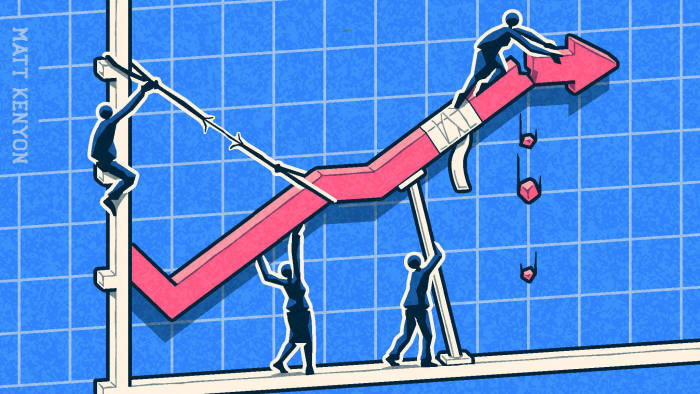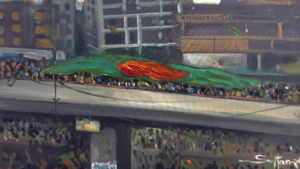
One of the reasons is that what had been a gradual decline in poverty since 1992 is about to take off in an upward direction
An inherent assumption behind fiscal and monetary policymaking – including the budget – has been the expectation of economic activities regaining normalcy at the earliest. It is rather a presumption that the economy will pick up pace based on the premises of business-as-usual.
The number of confirmed cases of infections in the world has been accelerating and exhibits no indications of a possible slowing down, or curve flattening. The assumption that the economy will rapidly bounce back from its massive contraction has so far influenced the government’s listed targets – on economic indicators such as growth, investment and revenue – and requires thorough scrutiny.
The myriad economic fallouts from the shrinkage are at risk of being left unaddressed. Recovery is deemed to be following either a U, V or W shape. Optimists project a rapid and quick recovery to the previous growth path, resembling a V-shaped curve. The rapid rise from a 5.2 percent to 8.2 percent growth rate in one fiscal year reverberates this line of thinking.
Recovery may, however, in reality, be slow and delayed, because of several underlying shortcomings in the assumptions.
Firstly, poverty no longer remains under the auspices of a straightforward headcount ratio during such unprecedented times of peril. The Covid-19 pandemic has severely impacted the life and livelihoods of the marginalised sections of the society, particularly: low-income people, women, children, the elderly, the unemployed, informal sector workers, plus members of the lower-middle class and middle class.
Income erosion resulting from the losses in various sectors from the shutdown will create new poor in the country. The income erosion may result in 43.5 percent households having income less than the international poverty line, according to an estimate by the Unnayan Onneshan.
For the first time in thirty years, the trend of poverty is set to reverse its course – what had been a gradual decline in poverty since 1992 is about to take off in an upward direction. This means the capacity to spend, labourers being the majority in the country, has declined and further exacerbated by the most of the consumers’ willingness to spend less due to self-imposed restrictions in movements – together with the intrinsic nature of consumer’ thrift.
A fall in individuals’ spending also constrains firms to produce even less while these are already producing fewer goods and services – as evident in use of lower labour time due to reduction and closure of formal and informal enterprises and interruptions in workplaces and markets. A mission-driven strategy with specific fiscal allocations for universal basic income grants, job retention and job creation has arisen as the need of the hour–yet such a course reversal approach is missing.
Secondly, the emergence of a new poor population ought to have been given a specific strategic focus for a road to recovery. A large cohort of urban informal sector workers facing job losses and minimal savings, constituting 21.4 percent of the population and the large number of returnee migrant workers who may face income erosion from loss of jobs and existing debt are at risk of falling back into poverty.
This situation is expected to worsen further as the shutdown is prolonged the world over, leading to more and more people falling into poverty. The existing social safety net programmes are fragmented with more than 118 programmes run by different ministries and plagued with high exclusion and inclusion errors.
The coverage is meagre since around 35.77 percent of the rural poor have access to safety net programmes whilst only 17.84 percent of the urban poor have access to these, as per the World Bank.
Conventional fiscal measures in addressing the new poor population, which possess distinct characteristics of their own, may prove to be futile. This requires a major shift from the current target based approach of safety net programmes to a full-fledged life-cycle based universal social security system – besides a thought through rural regeneration schemes comprising reskilling and employment creation to stave-off the unemployment and underemployment crisis.
Thirdly, several labour-intensive cottage, micro, small and medium industries are often out of the bounds of the mainstream financial sector i.e. the “unbanked” population. As a result, these firms lack access to credit to keep their business afloat, which is more critical during a contraction.
The cottage, micro and small enterprises together cover 99.84 percent of the total enterprises in the country. Small and medium enterprises (SMEs) – comprising the self-employed, small business owners and vendors – contribute one-fourth of the GDP. As of 2018 it stands at $79 billion and accounts for 40 percent of the manufacturing output as per the Asian Development Bank.
The industrial sector itself contributes most efficiently to poverty reduction. The excessive dependence on monetary policy with stringent conditions in the absence of actionable fiscal support may be a deterrent in bouncing back to the growth path.
Fourthly, recovery does not equate to a promise of supply of liquidity. Money changing hands at random does not ensure that it reaches where it is needed the most. Even in an ideal condition, an expansionary monetary policy of flushing in more liquidity into the economy may fail to ensure economic recovery, lest a rapid one.
The country’s banking sector was besieged with huge non-performing loans and governance deficits even before Covid-19 and accrued effects of losses of affected sectors worsened the situation. The government, resorting to bank borrowing and financial repression, may aggravate the liquidity crunch.
In such a circumstance, excessive reliance of the stimulus package on banks tantamount to a policy misstep. Henceforth, a sustained recovery may not take place unless a strong discretionary fiscal policy is put in place and effectively implemented. Fiscal policy has the capacity to be directed and driven towards specific groups, if carried out with effective governance and inbuilt accountability.
Fifthly, a stench of short-sightedness wafts off the direction of budgetary allocations and increments. The focus on a single exporting industry that is encountering cancellation of orders, and the global scenario of a pandemic that showcases bleak potential for exports of apparel to take off in the near future given that export destination countries are badly infected as well, expresses a lack of forward thinking in terms of government investment in industries.
A sustained, mission-driven strategy – comprising: diversification, technological acquisition, competitiveness for being part of the international production network, and expansion of domestic capacity – is much warranted.
Finally, a large part of the economic recovery may be delayed due to an age-old deficit in governance. Albeit a crash may be staved off by the stimulus packages announced, but it will be to no avail if shortcomings in accountability are not addressed. This renders the significance of oversight crucial.
Conspicuous contradictions raise the flag in promoting an equitable, rapid economic recovery expectation in the span of one fiscal year.
The prevalence of tunnel vision in determining allocations seems to favour clientelist networks and shows little consideration of the emerging nuances brought on by the struggles of: workers, the informal sector, small business owners, and the majority of the citizens who still remain excluded during such trying times. The lack of a focused strategy, along with a roadmap to recovery, nonetheless exposes the inability to serve the needs of the many.
Published in TBSnews.





